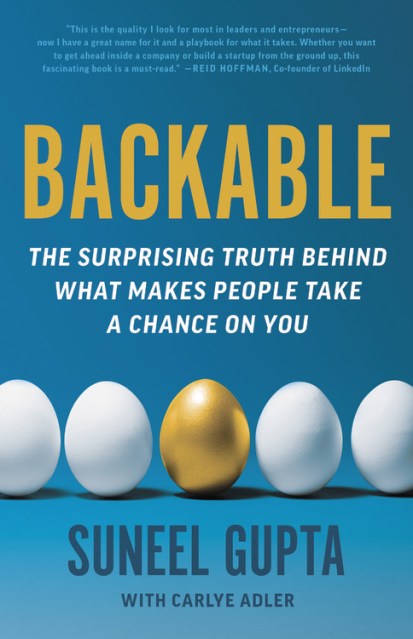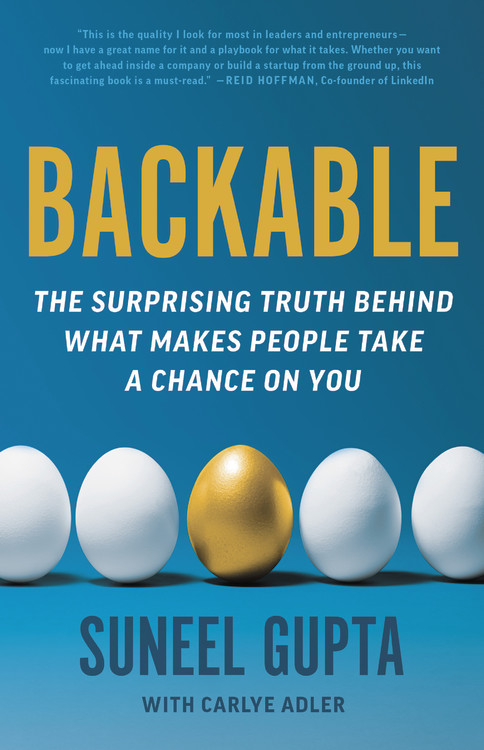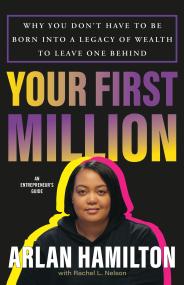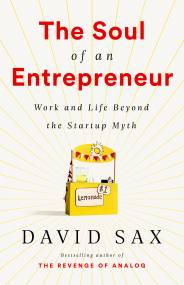Promotion
Use code MOM24 for 20% off site wide + free shipping over $45
Backable
The Surprising Truth Behind What Makes People Take a Chance on You
Contributors
By Suneel Gupta
With Carlye Adler
Formats and Prices
Price
$29.00Price
$37.00 CADFormat
Format:
- Hardcover $29.00 $37.00 CAD
- ebook $14.99 $19.99 CAD
- Audiobook Download (Unabridged) $24.99
- Trade Paperback $16.99
This item is a preorder. Your payment method will be charged immediately, and the product is expected to ship on or around February 23, 2021. This date is subject to change due to shipping delays beyond our control.
Also available from:
"The most exceptional people aren't just brilliant…they're backable." —Daniel Pink, #1 New York Times bestselling author of When, Drive and To Sell is Human
No one makes it alone. But there’s a reason some people can get investors or bosses to believe in them while others cannot. And that reason has little to do with experience, pedigree, or a polished business plan. Backable people seem to have a hidden quality that inspires others to take action. We often chalk
this up to natural talent or charisma…either you have “it” or you don’t.
After getting rejected by every investor he pitched, Suneel Gupta had a burning question: Could “it” be learned?
Drawing lessons from hundreds of the world’s biggest thinkers, Gupta discovered how to pitch new ideas in a way that has raised millions of dollars, influenced large-scale change inside massive corporations, and even convinced his eight-year-old daughter to clean her room. Inside Backable are long-held secrets from producers of Oscar-winning films, members of Congress, military leaders, culinary stars, venture capitalists, founders of unicorn-status startups, and executives at iconic companies like Lego, Method, and Pixar.
Backable reveals how the key to success is not charisma, connections, or even your résumé, but rather your ability to persuade others to
take a chance on you. This original book will show you how.
Genre:
-
“The most successful people aren’t just brilliant...they’re backable. This is the quality I look for most in leaders I recruit and entrepreneurs I fund—now I have a great name for it and a playbook for what it takes. Whether you want to get ahead inside a company or build a startup from the ground up, this fascinating book is a must-read.”Reid Hoffman, co-founder of Linkedin
-
"The most exceptional people aren't just brilliant...they're backable. This remarkable book can be your secret weapon for bringing your idea to life."Daniel Pink, #1 New York Times bestselling author of When, Drive and To Sell is Human
-
“This book is truly brave. I felt like I was sitting with Suneel as he unveiled secret steps that anyone can take to stand out and achieve their dreams.”Reshma Saujani, founder and CEO of Girls Who Code, bestselling author of Brave Not Perfect
-
"Being backable isn’t just for celebrities and CEOs. It’s a required skill for anyone who is trying to make it in the world. This book will change the trajectory of careers, launch new ideas into the world, and inspire cocktail party conversation for years to come."Dr. Jennifer Aaker General Atlantic Professor at Stanford Graduate School of Business
-
"Suneel Gupta demystifies the “x-factor” I look for in leaders, activists and entrepreneurs. Becoming backable will change how the world sees you—and how you see yourself."Brian Grazer, Oscar-winning producer
-
"Backable provides a super-readable and actionable look at how to make your ideas take flight. Whether you're pitching a brand-new startup or an idea for your company's next product, you'll find a wealth of insights and stories throughout."Mike Krieger, co-founder of Instagram
- On Sale
- Feb 23, 2021
- Page Count
- 256 pages
- Publisher
- Little, Brown and Company
- ISBN-13
- 9780316494519
Newsletter Signup
By clicking ‘Sign Up,’ I acknowledge that I have read and agree to Hachette Book Group’s Privacy Policy and Terms of Use







